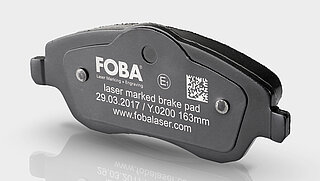Code Verification and Code Validation of Traceability Codes: Does it make a Difference?

Product traceability is standard among nearly all industries. Especially in automotive and medical industries, traceability codes have become indispensable. But the codes need to be clearly legible for safe traceability. Laser marking systems with integrated vision are capable of validating codes right after marking to check the legibility. Read more about laser marking with validation prior and after marking here.
In this context, some people not only talk about validation, but also code verification is often mentioned: Does it make a difference? The answer right away: Yes, it does. The terms “code validation” and “code verification” do not mean the same. A lot of confusion about code validation and verification stems from the fact that a lot of people use these terms as synonyms.
Why should that matter to you? Let’s assume that you are talking to people from a laser company or an integrator and you ask them to add a system which can check your 1D or 2D codes after laser marking. Then it is important to know the difference. Because if you do not use these terms precisely when talking to these people, they might confirm or reject something that in fact you did not mean.
What are the differences between code validation and code verification?
In a few words:
- Code validation is the objective process of measuring/grading the quality of a code to an internal standard. This internal standard typically correlates and leans on to an international standard.
- Code verification is the objective process of measuring/grading the quality of a code to an international standard, for example ISO15415 or AIM DPM/ISO TR 29158.
Why not go for code verification all the time? Wouldn’t that be better?
Not necessarily, because…
- code verification comes with a different price tag for respective equipment,
- it is sometimes impossible and often very difficult to fully comply with all the conditions of the respective international standard, when the camera is integrated in a machine or production line, and
- it is usually not necessary, if your objective is process control and not quality measurement according to an international standard in the first place.
What does the difference between code validation and verification mean?
Code validation will help you detect code quality deviances, therefore supports your work towards achieving process control, whereas code verification enables you determine the objective quality level (a specific grade) of a code with reference to an international standard. So, code verification comes into play, when you need to provide evidence that a code was not only readable and stayed within a certain quality band but matched a specific grade.
To sum it up:
You see that there is a fine, yet significant difference between code validation and code verification. It is worthwhile understanding this difference to avoid any misguided discussions or misunderstandings with people of your supplier and around you.